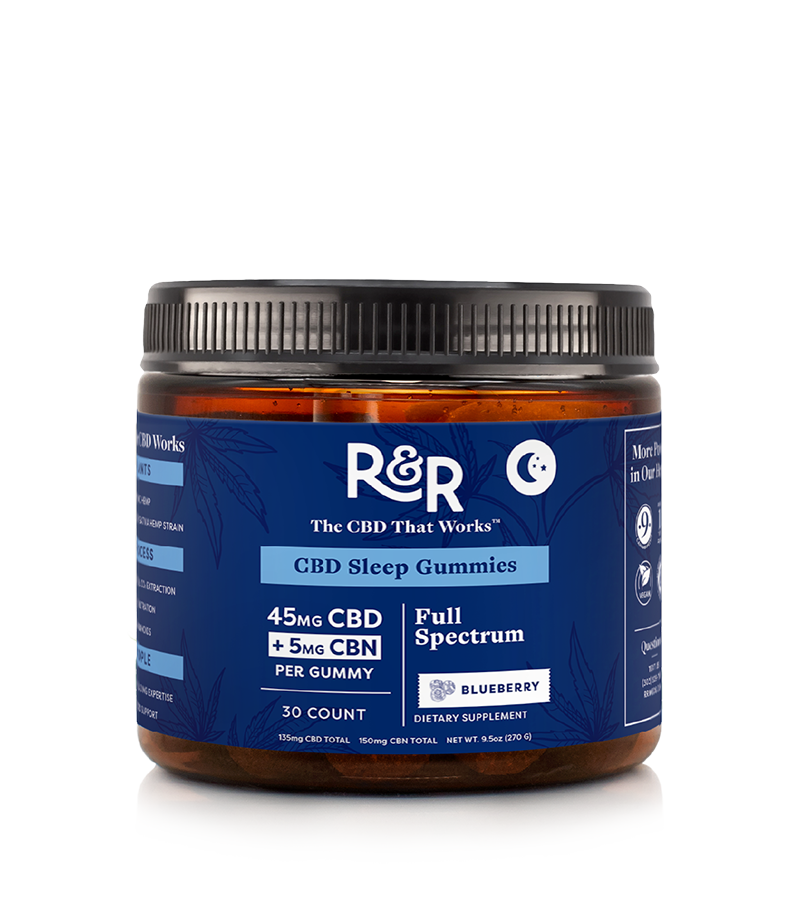As a dog owner, you want your furry friend to be happy, healthy, and pain-free. However, dogs can't verbally tell us when they're hurting, so it's up to us to recognize the signs of discomfort.
Leg pain is a common issue for many dogs and can stem from various causes. Arthritis and injury are probably the most common causes, but there are many other reasons why a dog could have leg pain.
So, what can you give a dog with leg pain?
Key Takeaways
- Leg pain in dogs can result from arthritis, hip dysplasia, ligament or tendon injuries, fractures, muscle strains, or paw injuries.
- Common signs of leg pain in dogs include limping, reluctance to move, whining or yelping when touched, excessive licking of the affected area, and visible swelling.
- For chronic pain, a comprehensive and consistent plan combining medications, supplements, and lifestyle adjustments is most effective.
What Are the Signs of Leg Pain in Dogs?
Limping is the most obvious sign that your dog is experiencing leg pain. If you notice your pup favoring one leg over the other or avoiding putting weight on the affected limb altogether, something is up.
Another indication of leg pain is a reluctance to move or exercise. If a normally active dog suddenly loses interest in walks or playing, it could be a sign that it's hurting.
Whining, yelping, or crying out when touched can also point to leg pain, mainly if it occurs when you touch a specific area. The dog may also lick, chew, or bite at the painful spot in an attempt to soothe the discomfort.
Finally, visible swelling or inflammation around the leg or joint can be a red flag for pain. If you notice any of these signs, we recommend having your dog evaluated by a veterinarian to determine the underlying cause and appropriate treatment plan.
What Are the Common Causes of Leg Pain in Dogs?
Several factors can contribute to leg pain in dogs. Understanding these causes can help you better identify the issue and work with a veterinarian to develop an effective treatment plan.
Arthritis
Arthritis is a common cause of leg pain in older dogs. As dogs age, the cartilage in their joints wears down, leading to inflammation and discomfort. Larger breeds and overweight dogs are particularly prone to developing arthritis.
Hip Dysplasia
Hip dysplasia is a genetic condition that affects the hip joint, causing it to develop abnormally. This can lead to pain, lameness, and difficulty moving. Certain breeds, such as German Shepherds, Labrador Retrievers, and Golden Retrievers, are more susceptible to hip dysplasia.
Ligament or Tendon Injury
Dogs can injure their ligaments or tendons, such as the knee's cranial cruciate ligament (CCL), through sudden movements or trauma. These injuries can cause significant pain and lameness and often require surgical intervention.
Fractures
Broken bones can occur due to accidents, falls, or other traumatic events. Fractures can cause severe leg pain and may require splinting, casting, or surgery to heal properly.
Muscle Strains
Overexertion or improper exercise can cause muscle strains in dogs' legs. These strains can cause pain, swelling, and difficulty moving the affected limb.
Paw Injuries
Your dog's paws are constantly exposed to various surfaces and potential hazards. Cuts, scrapes, foreign objects, or burns can cause pain and discomfort, leading to limping or favoring of the affected leg.
What Medications Can I Give My Dog for Leg Pain?
If your dog is experiencing leg pain, it's important to consult a veterinarian to determine the best course of treatment. Depending on the underlying cause and severity of the pain, the vet may recommend various medications to help manage the discomfort.
NSAIDs (Non-Steroidal Anti-Inflammatory Drugs)
NSAIDs are a common choice for managing pain and inflammation in dogs. These medications reduce the production of prostaglandins, which are responsible for causing inflammation and pain. Some commonly prescribed NSAIDs for dogs include:
- Carprofen (Novox or Rimadyl): This medication is often used to treat osteoarthritis, hip dysplasia, and other joint conditions. It helps reduce inflammation and pain, allowing your dog to move more comfortably.
- Deracoxib (Deramaxx): Deracoxib is another NSAID that can be used to manage pain and inflammation associated with osteoarthritis and other joint issues. It is typically given once daily with food.
- Meloxicam (Metacam): Meloxicam treats various painful conditions in dogs, including osteoarthritis, soft tissue injuries, and post-operative pain. It is available in liquid and tablet forms for easy administration.
- Firocoxib (Previcox): This NSAID is specifically designed for dogs and is used to manage pain and inflammation related to osteoarthritis. It is a chewable tablet that can be given with or without food.
While NSAIDs can be effective in managing leg pain in dogs, they can also cause side effects such as gastrointestinal upset and kidney or liver problems. Therefore, follow your veterinarian's dosing instructions and report any adverse reactions immediately.
Opioids
In some cases, a veterinarian may prescribe opioids to help manage a dog's leg pain. Opioids bind to specific receptors in the brain and spinal cord, reducing pain perception. Two common opioids used in dogs are:
- Tramadol: This is a synthetic opioid used to treat moderate to severe pain in dogs. It is often prescribed for post-operative pain management or to help control chronic pain conditions like osteoarthritis.
- Codeine: Codeine is another opioid that may be prescribed to manage pain in dogs. It is often combined with other medications, such as acetaminophen, to provide holistic pain relief.
Opioids can cause side effects such as sedation, constipation, and decreased appetite. They also have the potential for abuse (in humans) and should only be used under the strict guidance of a veterinarian.
In addition to NSAIDs and opioids, a veterinarian may recommend other medications, such as gabapentin for nerve pain or amantadine for chronic pain management.
Always consult your vet before giving your dog any new medications, and never give human pain medications without explicit veterinary approval, as many can be toxic to dogs.
What Natural Remedies Can I Give My Dog for Leg Pain?
If you prefer a holistic approach, there are several natural remedies that may provide relief without the potential side effects of traditional medications. These are:
CBD Oil
CBD oil is derived from hemp and has been increasingly recognized for its potential benefits in managing pain and inflammation in both humans and animals.
CBD oil can be a natural alternative to traditional medications in dogs, especially for conditions like arthritis or injury-related discomfort. Here’s how CBD oil may help and what you should consider when using it:
Pain Relief and Anti-inflammatory Properties
CBD interacts with the endocannabinoid system (ECS), a network of receptors that helps regulate various physiological processes, including pain perception and inflammation. By modulating these receptors, CBD may reduce pain and swelling in affected areas.
Non-Psychoactive
Unlike THC (tetrahydrocannabinol), the psychoactive compound in cannabis, CBD is non-intoxicating, meaning it won’t make your dog “high.” This makes it a safe option for pets since THC is actually toxic to dogs.
Arthritis Management
Many dogs, especially older ones, suffer from arthritis, which causes chronic joint pain and stiffness. CBD oil may help reduce the discomfort associated with arthritis by decreasing inflammation in the joints, potentially improving mobility and quality of life.
Anxiety and Stress Relief
In addition to pain management, CBD oil can have calming effects, which might be beneficial for dogs experiencing anxiety or stress due to chronic pain. This can lead to a better overall sense of well-being, making your dog more comfortable even during painful flare-ups.
Selecting the Right CBD Product
When choosing a CBD oil for your dog, it’s crucial to select products that are specifically designed for pets. Look for high-quality CBD oils that are:
- Third-party tested to ensure purity and potency
- Free of THC to avoid any psychoactive effects
- Formulated for pets to ensure the right concentration for animals. Dogs have more receptors than humans, so human products are generally too overdosed for pets. Others contain harmful ingredients (e.g., artificial sweeteners like xylitol).
Proper Dosing
Always start with a low dose and gradually increase it based on your dog’s weight and response to the treatment.
We recommend a starting dose of 0.2-0.5mg of CBD per pound of body weight. Monitor the dog closely for any signs of improvement or side effects, such as lethargy, vomiting, or diarrhea.
Fortunately, our CBD Mobility Dog Chews are excellent for precise dosing. With 5mg of CBD, a multifunctional blend of cannabinoids (CBD, CBC, CBG, CBN, and more), and adaptogens like Glucosamine, MSM, and Chondroitin, these Chews can sooth pain your dog may feel.*
Consult Your Veterinarian
Before starting CBD oil, it’s essential to discuss it with a veterinarian. While CBD is generally safe, it may interact with other medications or exacerbate certain health conditions. It’s ideal to get a second opinion from a qualified professional.
Long-Term Use
CBD oil may be used long-term for chronic pain conditions like arthritis. Still, periodic check-ins with your vet are recommended to reassess the dosage and monitor any changes in the dog’s condition.
Glucosamine and Chondroitin Supplements
Glucosamine and chondroitin are natural compounds in cartilage, the connective tissue that cushions joints. As dogs age, their cartilage can break down, leading to joint pain and stiffness.
Glucosamine and chondroitin supplements can help support joint health by promoting the production of new cartilage and reducing inflammation. These supplements are available in various forms, such as chews, tablets, and powders, making them easy to incorporate into your dog's routine.
Omega-3 Fatty Acids
Omega-3 fatty acids, found in fish oil and certain plant sources, have anti-inflammatory properties that can help reduce joint pain and improve mobility in dogs with arthritis or other leg pain conditions.
Omega-3s can be given as a supplement or incorporated into a dog's diet through foods like salmon, sardines, or flaxseed. When choosing an omega-3 supplement, look for high-quality products specifically formulated for dogs to ensure proper dosing and safety.
Turmeric
Turmeric, a spice commonly used in Indian and Middle Eastern cuisine, contains a compound called curcumin. Curcumin has potent anti-inflammatory and antioxidant properties. It can help reduce inflammation and pain associated with arthritis and other joint conditions in dogs.
You can add turmeric to your dog's food or give it a turmeric supplement. However, turmeric can interact with certain medications, so consult a veterinarian before starting this remedy.
Massage and Physical Therapy
Massaging your dog's affected leg can help improve circulation, reduce stiffness, and alleviate pain. Use light, circular motions, and avoid putting pressure on particularly sensitive areas.
You can also apply a warm compress to the affected area for 10-15 minutes to help soothe sore muscles and joints. If your dog's leg pain is more severe or persistent, consider working with a certified canine physical therapist to develop a tailored exercise and rehabilitation plan to help improve your dog's mobility and reduce pain.
Acupuncture
Acupuncture involves inserting thin needles into specific points on the body to stimulate healing and reduce pain. This technique can help alleviate leg pain by promoting the release of endorphins, the body's natural pain-relieving chemicals, and improving blood flow to the affected area.
Work with a certified veterinary acupuncturist with experience treating dogs with leg pain conditions. While some dogs may be initially apprehensive about the needles, most find the treatment relaxing and experience significant pain relief after a few sessions.
How Can I Help My Dog Manage Leg Pain at Home?

In addition to medications and natural remedies, there are several things you can do at home to help your dog and improve their overall comfort.
Provide a Comfortable Resting Area
Create a cozy, supportive bed for your dog to rest and recuperate. An orthopedic dog bed with memory foam can help alleviate pressure on sore joints and provide extra cushioning. Place the bed in a quiet, easily accessible area of your home.
Use Ramps or Stairs for Easier Access
If your dog has difficulty climbing stairs or jumping onto furniture due to leg pain, consider installing ramps or pet stairs to help them navigate the home more easily. Ramps can help dogs get in and out of the car or access raised sleeping areas. Be sure to choose a ramp with a non-slip surface and sturdy construction for your dog's safety.
Apply Heat or Cold Therapy
Applying heat or cold can help reduce pain and inflammation. For acute injuries or swelling, use a cold pack wrapped in a towel and apply it to the area for 10-15 minutes at a time, several times a day.
For chronic pain or stiffness, a warm compress or heating pad on a low setting can help soothe sore muscles and improve circulation. Never apply heat or cold directly to your dog's skin.
Maintain a Healthy Weight
Excess weight stresses the joints, exacerbating leg pain and reducing mobility. Work with a veterinarian to develop a weight management plan with a balanced, nutrient-rich diet and appropriate portion sizes.
Avoid feeding table scraps and limit treats to low-calorie options. Regular weigh-ins can help you track your dog's progress.
Engage in Low-Impact Exercises
While it may seem counterintuitive to exercise a dog with leg pain, regular low-impact activities can help maintain muscle strength, improve joint flexibility, and reduce stiffness. Short, leashed walks on soft surfaces like grass or sand can provide gentle exercise without overexerting your dog.
Swimming or hydrotherapy, performed under the guidance of a trained professional, is an excellent way to build strength and endurance without putting excessive strain on painful joints. Always start slowly and gradually increase the duration and intensity of exercise as the dog's condition improves.
When Should I Take My Dog to the Vet for Leg Pain?
While some cases of leg pain can be managed at home with rest, medications, and natural remedies, there are certain situations where it's important to seek specialized care.
For instance, consult a veterinarian if your dog's pain persists for more than 24-48 hours despite home treatment. Prolonged pain can indicate a more serious underlying condition that requires professional diagnosis and treatment.
Severe pain or inability to put weight on the affected leg also warrants a vet visit. These signs may point to a fracture, ligament tear, or other significant injury that needs immediate attention.
Watch for signs of infection around the painful area, such as swelling, redness, or discharge. Infections can quickly spread and cause systemic illness, so prompt veterinary care is necessary.
Also, if your dog has a known injury or pre-existing condition like arthritis or hip dysplasia, it's best to exercise caution and schedule a check-up with a vet when pain arises. They can assess whether the pain is related to the existing issue or a new problem that needs addressing.
Remember, dogs are masters at hiding pain, so even subtle changes in behavior or mobility should be taken seriously. When in doubt, consult a veterinarian.
What Are the Best Treatment Options for Dogs with Chronic Leg Pain?
For dogs suffering from chronic leg pain, a comprehensive approach that combines medications, natural remedies, and lifestyle modifications often provides the most effective relief. Among the various treatment options, CBD oil stands out as one of the best natural remedies for managing pain and inflammation in dogs.
Derived from hemp, CBD has anti-inflammatory and pain-relieving properties that can help reduce discomfort. Many dog owners have reported significant improvements in their pets’ mobility and comfort after incorporating high-quality, pet-specific CBD oil into their treatment regimen.
If your furry companion is struggling with age-related pains, like achy joints, CBD is a perfect, all-natural solution that won’t give them any harsh side effects.
Our Multifunctional CBD Pet Tincture is designed for easy dosing to suit even the pickiest of eaters. When taken consistently, this product can help your pet experience calm and reduced pain.*
NSAIDs, opioids, or other pain-relieving medications can also help, depending on the severity of the dog’s condition. These medications can be used alongside natural remedies like CBD oil to support joint health and provide a well-rounded pain management strategy.
CBD oil, in particular, offers a holistic and safe option for long-term pain control, making it an excellent choice for dogs with ongoing issues.
A healthy weight is essential to reducing stress on painful joints. Working with a veterinarian to create a balanced, age-appropriate diet and ensuring your dog sticks to the recommended portion sizes will help with weight management.
Also, regular low-impact exercises, like leashed walks on soft surfaces or swimming, are great for keeping the muscles and joints strong and flexible without worsening the pain.
Physical therapy, including targeted exercises and massage, can be especially beneficial. When supervised by professionals, these activities can provide relief while strengthening a dog’s body to cope better with chronic pain.
Making adjustments at home can also significantly improve a dog’s comfort. A cozy, supportive resting area with an orthopedic bed helps relieve pressure on sore joints. Moreover, ramps or pet stairs help your dog move around easily.
Similarly, assistive devices like harnesses or slings add support during walks and make daily life more manageable for dogs with chronic pain.
Consistency in treatment is equally crucial. Stick to a regular schedule for administering medications, natural supplements like CBD oil, and exercise routines. Monitor your dog’s behavior and response to the treatment plan, and consult a veterinarian if any changes or concerns arise.
Final Thoughts
With patience, dedication, and a personalized treatment approach, you can help your canine friend cope with chronic leg pain and enjoy a better quality of life.
R&R CBD offers high-quality CBD products that can effectively relieve dogs' leg pain. Our carefully formulated CBD oils and treats help reduce inflammation and improve your dog's comfort.
Explore the best CBD options for your furry friend at R&R CBD.
Frequently Asked Questions
What Can I Give My Dog for Leg Pain at Home?
For dogs experiencing leg pain at home, you can provide natural remedies like CBD oil, which has pain-relieving and anti-inflammatory properties, or supplements like glucosamine and chondroitin, which support joint health.
What Human Pain Reliever Can I Give My Dog?
Without veterinary guidance, you should never give a dog human pain relievers, such as ibuprofen, acetaminophen, or aspirin. These medications can be toxic to dogs and may cause serious side effects.
Does CBD Oil Relieve Pain in Dogs?
Yes, CBD oil can help relieve pain in dogs. It works by interacting with the endocannabinoid system to reduce inflammation and discomfort.
Can I Rub CBD Oil on My Dog's Leg?
While CBD oil is typically administered orally, you can also apply CBD-infused balms or oils topically to a dog’s leg. This can provide localized relief for joint or muscle pain.
How Much CBD Oil Should I Give My Dog for Joint Pain?
The amount of CBD oil you should give your dog for joint pain depends on their weight and the concentration of the product. A standard starting dose is around 0.2-0.5 mg of CBD per pound of body weight.
Sources Used
- Article on Osteoarthritis in Dogs
- Understanding Dog Arthritis
- Overview of Hip Dysplasia
- Research on Inflammatory Arthritis
- Study on Joint Health
- Arthritis Progression Analysis
- Canine Joint Disease Study
- Rheumatology Research Findings
- PMCID Research Summary
- Springer Study on Joint Therapies
- PubMed Analysis on Joint Pain
- Advanced Study on Canine Arthritis



































